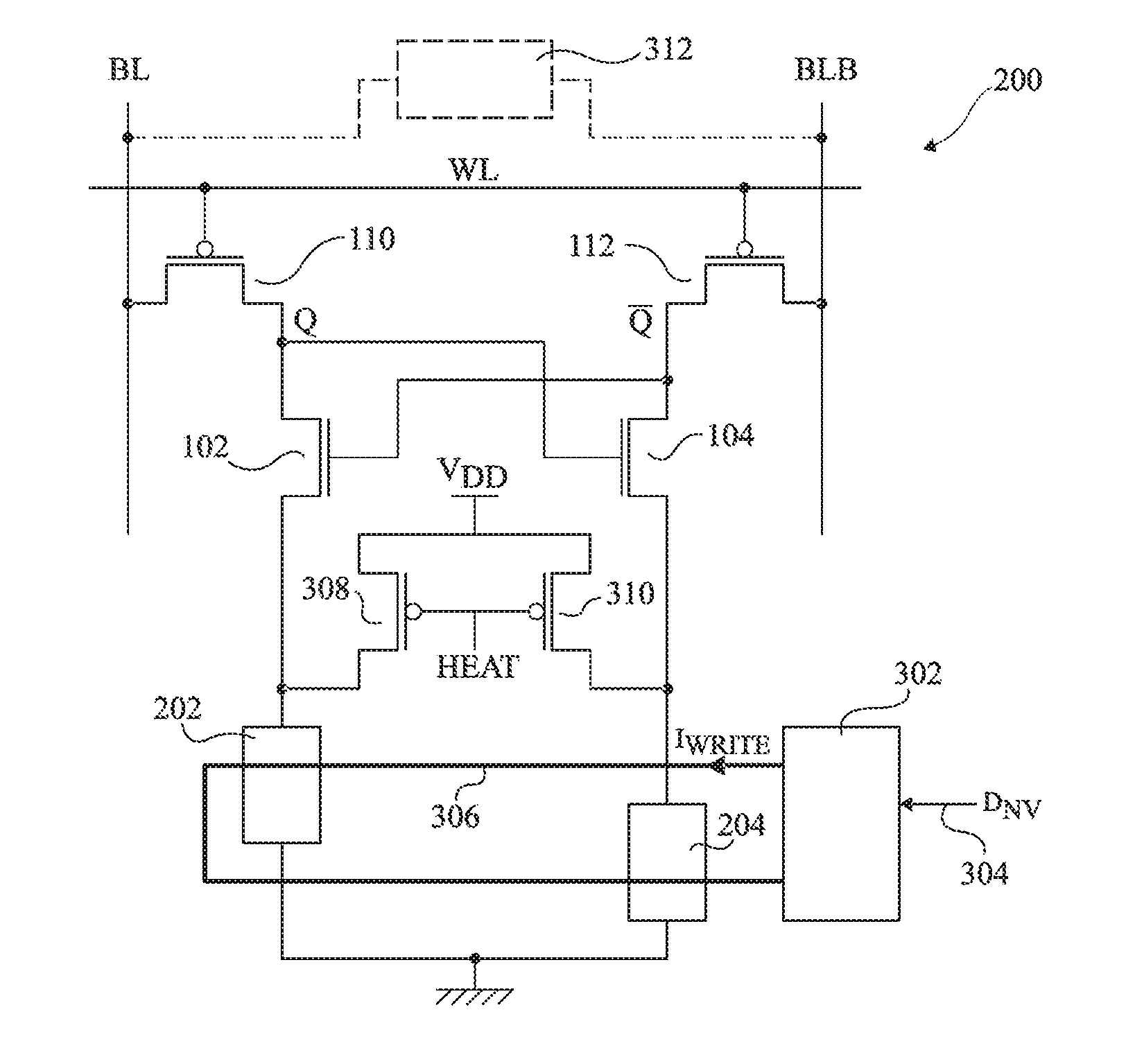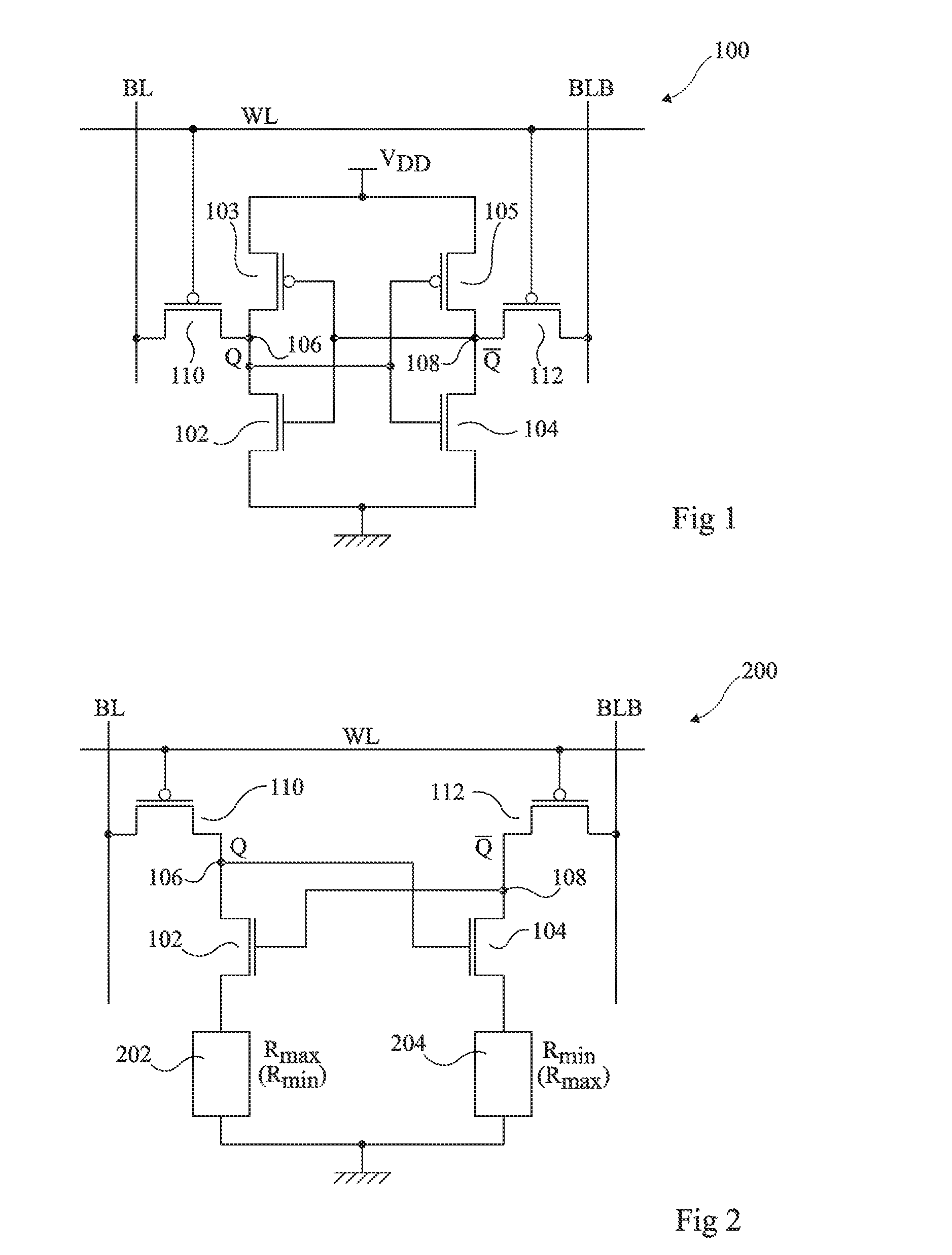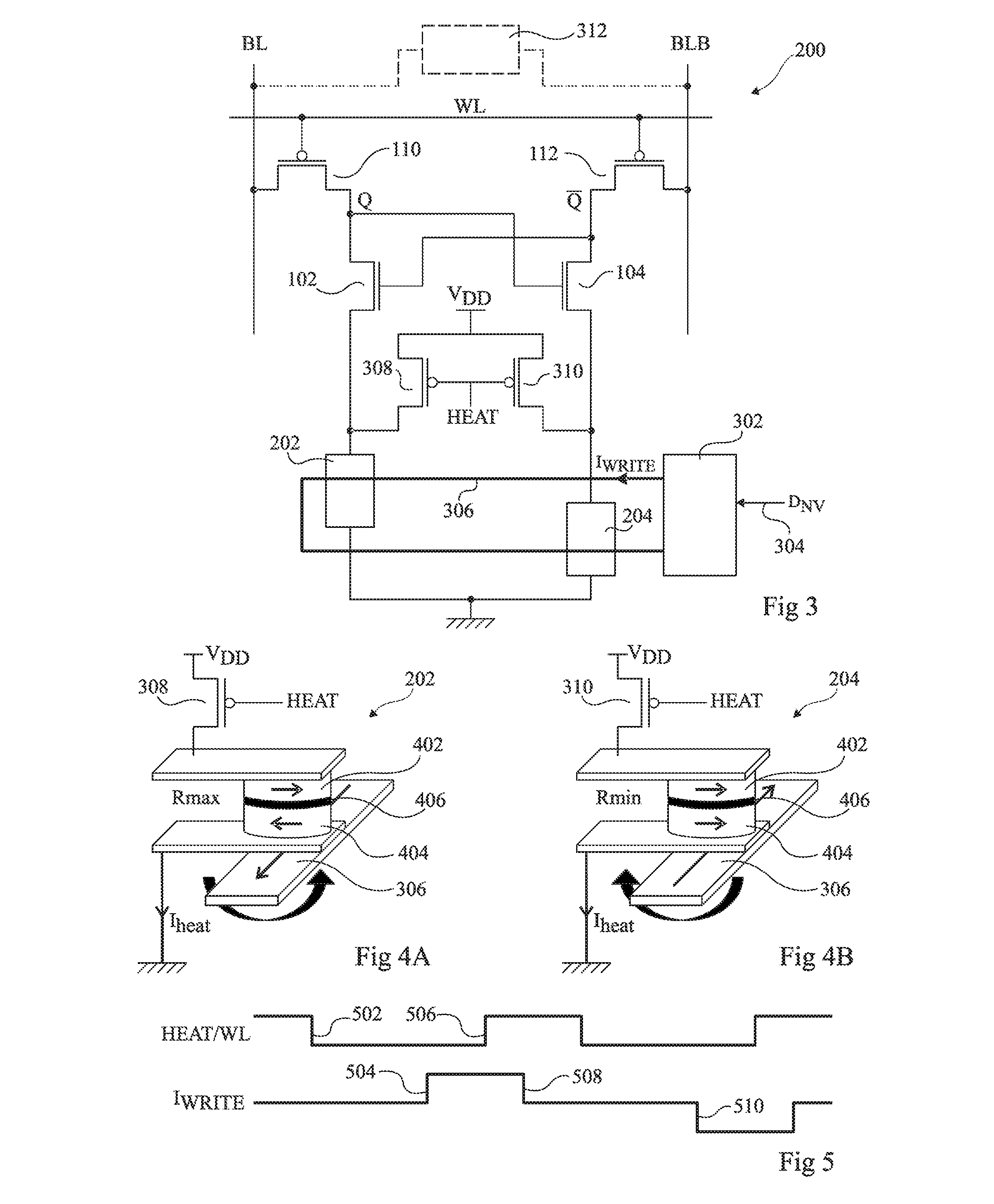Volatile/non-volatile memory cell
a memory cell, non-volatile technology, applied in the direction of logic circuit coupling/interface arrangement, pulse technique, instruments, etc., can solve the problems of requiring a relatively high supply voltage, and affecting the operation of the devi
- Summary
- Abstract
- Description
- Claims
- Application Information
AI Technical Summary
Benefits of technology
Problems solved by technology
Method used
Image
Examples
Embodiment Construction
[0039]Only those features useful for an understanding of the invention have been illustrated in the figures and will be described in detail in the following. Other aspects, such as the particular applications of the memory cell, have not been described, the memory cell being suitable for use in a wide range of applications.
[0040]FIG. 2 illustrates a memory cell 200 that stores, in addition to one bit of volatile data, one bit of non-volatile data. The volatile data is stored in electronic form by a latch. The non-volatile data however is stored by the physical state of a pair of resistance switching elements, as will now be described.
[0041]The memory cell 200 is similar to the SRAM cell 100 of FIG. 1 described above, and the common portions will not be described again in detail. However, rather than comprising six transistors, the memory cell 200 comprises just four transistors. Indeed, the PMOS transistors 103 and 105 forming half of each inverter are removed, and thus there is no ...
PUM
 Login to View More
Login to View More Abstract
Description
Claims
Application Information
 Login to View More
Login to View More - R&D
- Intellectual Property
- Life Sciences
- Materials
- Tech Scout
- Unparalleled Data Quality
- Higher Quality Content
- 60% Fewer Hallucinations
Browse by: Latest US Patents, China's latest patents, Technical Efficacy Thesaurus, Application Domain, Technology Topic, Popular Technical Reports.
© 2025 PatSnap. All rights reserved.Legal|Privacy policy|Modern Slavery Act Transparency Statement|Sitemap|About US| Contact US: help@patsnap.com



